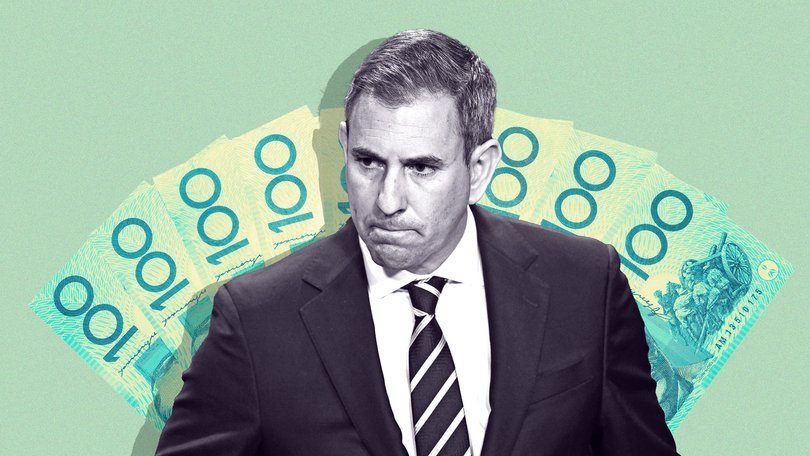Rising iron ore prices shrink Federal Budget deficit; Jim Chalmers claims credit anyway

Treasurer Jim Chalmers claimed credit on Monday for a smaller Budget deficit than predicted by the Albanese Government, even though the difference was mainly due to wrong official forecasts for iron ore prices.
Treasury’s Final Budget Outcome for the 2024-25, published Monday, was a $10 billion deficit, well below the $27.6 billion forecast in the pre-election March Budget.
Instead of plunging to $US60 a tonne, as pessimistically predicted six months ago, the spot iron ore price rose from $US102 to $US105 a tonne, thanks to manufacturing holding up in China, Australia’s biggest trading partner and key buyer of Australian commodities.
Sign up to The Nightly's newsletters.
Get the first look at the digital newspaper, curated daily stories and breaking headlines delivered to your inbox.
By continuing you agree to our Terms and Privacy Policy.A higher price for iron ore, the commodity used to make steel, means the government gets more revenue from company taxes.
Dr Chalmers hailed the $17.6 billion Budget turnaround as an example of responsible economic management, without mentioning the better-than-expected iron ore price.
“We’ve turned two big Liberal deficits into two substantial Labor surpluses in our first two years, significantly reduced the deficit in our third year, and continued to pay down debt,” he said.
“In dollar terms, we’ve made more progress on the Budget in three years than any government in history. It’s a reminder that we have one of the strongest budgets in the G20.”
But NAB chief economist Sally Auld said stronger than expected iron ore prices were a major factor for the smaller than forecast Budget deficit, with spot prices consistently staying above $US90 a tonne in 2025.
“You put in very conservative forecasts and bank an upside surprise,” she told The Nightly. “If you get that surprise, I think governments are much happier doing that than doing it the other way round which is putting in really optimistic growth and commodity price forecasts and then being disappointed.”
China’s demand for iron ore, used to make steel, was also holding up, even in the face of a severe property market downturn and US President Donald Trump’s punitive tariffs.
“People have scratched their heads as to why iron ore’s been relatively resilient in a world where steel demand doesn’t feel like it’s as strong as it has been,” Ms Auld said.
The Chinese are also making new renewable energy products to cater for global climate emission reduction goals.
“Don’t forget that they have embarked on a whole new program of what they call ‘new manufacturing’. They’ve invested a lot in solar panels and electric vehicles,” she said. “Yes, while some parts might have been adversely impacted by tariffs, there are other parts of the manufacturing complex in China that have done phenomenally well.”
‘Spinning’ the news
Liberal Senator Jane Hume told Sky News the Government was “spinning” a deficit into good news, with Treasury still predicting deficits in the coming years.
“A deficit at a time when we have full employment, when we have increasing inflation, this is simply bracket creep. It’s bracket creep and high commodity prices,” she said.
“And now they’re saying a (lower) deficit is good news? Well, give me a break. This is a government that has allowed their Budget to run out of control.”
Finance Minister Katy Gallagher argued that a key reason for the better revenue result was that “more Australians are in secure jobs, earning higher wages”.
“At the same time as revenue has strengthened, we’ve delivered cost-of-living relief, tax cuts for every taxpayer, cheaper childcare, energy bill relief and record investments in Medicare.”
Ms Auld said a tighter labour market, with unemployment still low at 4.2 per cent, meant the Federal Government was collecting more revenue from income taxes and paying out less in Centrelink payments.
“Those receipts flow to the Government so a stronger labour market generally means you get a bit more tax revenue than you thought and then you also have to pay out less in the form of unemployment benefits,” Ms Auld said.
Personal income taxes make up a little more than half of the Federal Government’s revenue.
Monday’s release of the Budget paper coincides with the Reserve Bank beginning two days of deliberations on whether to cut interest rates again from the existing level of 3.6 per cent.
